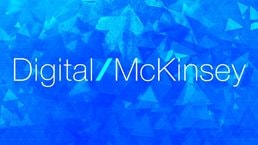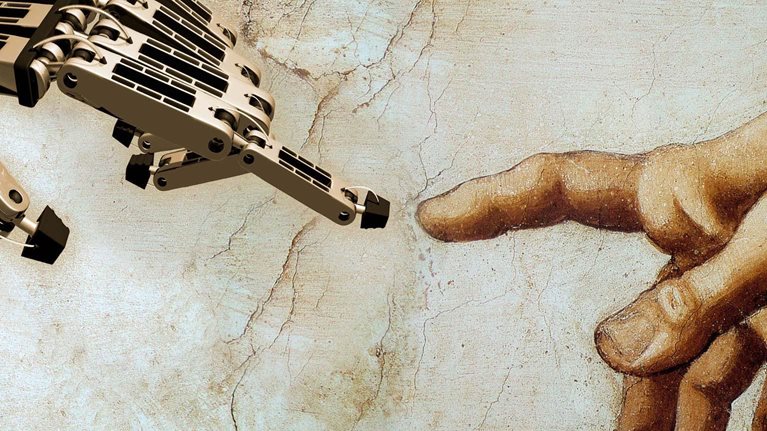Companies that successfully adopt digital technology don’t view it as an extra; digitization becomes central to what they are because they transform their value propositions and evolve every level of the organization so that it becomes data driven, customer obsessed, and highly agile. In this episode of the McKinsey Podcast, recorded in November 2015, principals Karel Dorner and David Edelman talk with Barr Seitz about why, decades into the digital revolution, companies are still trying to define what digital really is and struggling to make the most of it. An edited transcript of their conversation follows.
Podcast transcript
Barr Seitz: Hello and welcome to the McKinsey Podcast. I’m Barr Seitz, global publishing lead for McKinsey’s Marketing & Sales and Digital practices. I’m very happy to introduce my two guests, Karel Dorner, a partner in McKinsey’s Munich office and a leader of the McKinsey Digital Practice, and Dave Edelman, a partner in our Boston office and global leader of our Digital Marketing Group. Karel and Dave are also the authors of “What ‘digital’ really means,” one of the top articles published this year on mckinsey.com. I’ll be talking to Dave and Karel about the meaning of digital, why knowing the meaning is important, and how leaders can use that understanding to help transform a business at its core rather than at the edges.
Dave, the first question is for you. I’m fascinated by this idea that a good two decades or so into the digital revolution, we still feel the need to define what digital means. And yet, clearly, that’s the case. What is digital and what is it not, and why do businesses have such trouble defining it?
David Edelman: Barr, I think I’m going to take that question backward. Businesses have trouble defining digital because, for the most part, it seemed like an extra channel that they added on to their businesses—for customer service, an extra way customers could interact with them; for sales, an additional set of marketing channels. It always seemed like something added on to the business.
But what’s clear today—and emphasized by companies that have really created whole new business models based on digital—is that digital is not just about more; it’s about different. And you need to take a different view of how a business is affected by digital. We see digital as being three things. Digital can be the levers by which you think about new ways to assemble your overall business model, the way you make money, the way you deliver a value proposition overall. In parallel with that, digital also is a new way to interact with customers to take your value proposition and bring it to market. Third, digital is a different way of operating within a company, and within a broader ecosystem, to actually make those products and services happen.
Want to subscribe to The McKinsey Podcast?
The hard thing for businesses is that looking at digital through those lenses can be so different from the way you operate now. A classic example of this is the transformation that General Electric is going through. Instead of just, for example, selling a jet engine or selling a locomotive, they’re selling uptime. They’re using sensors on all of their equipment to track how their products perform. Then they’re proactively managing maintenance and upgrades.
They’re essentially selling what customers want—which is speed, time, and performance, rather than just buying a thing, a jet engine. That’s a pretty radical change in how you think about your business model.
Karel Dorner: Taking Dave’s example, this is not just bringing out a new product or the next version of an existing product. This is fundamentally changing the value proposition toward the customer, and it eventually affects all parts of the enterprise. It will affect the product-development side that has developed these jet engines. It will affect the sales division—how are they actually selling this; what are the sales models? Also, what are the channels? So there’s a marketing element there, as well. The service department also will very clearly be affected.
And that’s why leaders have to bring this perspective of what digital means for their companies, for their customers, into the entire organization and focus the organization behind a common goal. Otherwise, we see that companies are not able to create the momentum that is needed to become successful. In the past 20 years, digital opportunities were often scattered around. There were some initiatives popping up here and there; everybody more or less defined a personal version of digital. And that led to subcritical efforts that stalled and then led to miserable results.
Barr Seitz: Could you give examples of some practical steps companies can take to inject that cross-functional attitude and culture into the organization?
Karel Dorner: First of all, I think the CEO really has to stand for that digital target picture, the objective. You could also call it the vision. It’s not just having the long-term vision. It’s also embedding digital thinking in the way the CEO communicates with and enlightens the entire organization.
CEOs can also help to get this cross-functionality working by mandating cross-functional teams and organizational leaders that they have to sponsor. They have to make sure that the tradition of optimizing and rewarding individuals and top-line managers is shifted. This reward mechanism, the steering mechanism from the top, is needed. Eventually, there’s also the change-management aspect. People have to start taking a different attitude.
David Edelman: There are two different dimensions to think about here concerning the degree of change that’s going on in a company and what kind of leadership would be involved. In some digital changes to the core business, you’re not necessarily radically changing the whole business model—for example, a large retail chain setting up a “buy online, pick up in store” operation.
For a change like that, which is inevitably a cross-functional endeavor meant to create a new kind of customer journey, what we’re seeing that works is for CEOs to set up journey-based teams and declare that there are several new journeys. It could be “buy online, pick up in store.” It could be same-day delivery. It could be “look up online in a store, and complete a buy on your phone while you’re in a store.” Those three journeys, for a retail chain, could drive quite a lot of growth but are very complex cross-functionally.
The CEO would be setting up journey teams where there would be a leader, maybe a store-operations leader. It could be someone from the digital organization who’s then chartered to bring together a cross-functional team to work intensely together to tackle that journey. The measure of success is being able to actually release and roll out that journey and market it in order to attract volume.
Setting up the cross-functional team—that’s something the CEO has to make happen. But if it’s a whole new business model based on the core, that is going to require separate funding, possibly a separate organization that will need to be insulated from all the traditional overhead, policies, things that hamper the legacy business.
Barr Seitz: Karel, can you explain this idea of the new frontiers of value? What does that mean in practical terms, and how do business leaders implement that and think that through?
Karel Dorner: Let’s stay with the perspective that there are at least these two different dimensions—improving and digitizing the core versus really identifying the new disruptions and the new frontiers. The latter is very much driven by technology advancement and also by the way customers and consumers are adapting to that.
I’d like to take the example of connected homes. From now on, devices, appliances, the power line, and the entire infrastructure of a home are expected to be continuously connected to each other. That opens up completely new business models. Again, service-business models are one example and data-driven models are another. Essentially, somebody can start to really manage your home by certain core functions—say, by energy saving or by security. Whatever the key objective is or the key use case is, the service models will evolve around that.
And that’s what we mean by new frontiers. You have to lift boundaries that have traditionally been very sector specific. Instead, you really think not only about what is possible as an opportunity but also about how others could attack you if these new frontiers become the new norm.
David Edelman: One of the biggest changes digital allows is that what might have been product sales become services. That’s the GE example from before. That’s the connected home. You may have bought a thermostat, but now you’re buying energy management. You may have bought a TV, but now you’re buying entertainment streaming.
All of these are changes in the business model because it used to be around manufacturing, marketing, and sales. Now companies have to create a whole service infrastructure to manage streams of data, make sense of data, and use that to provide services. That’s a big change in the business model and in operations for companies that are used to just making and selling stuff.
The opportunity, on a service perspective, is for somebody to come and rethink the whole way to satisfy a customer’s need through a service. Companies get to do it fresh. They get to do it using the best possible interfaces and data. There are opportunities to come in and reconceive what it means to deliver a service—whether that’s transportation from point A to point B or replenishing ink for your printer. All of these are services you could now create, through the digital world, that weren’t there before. They require different kinds of business models.
Barr Seitz: Oftentimes, we hear that digital is treated as an end rather than a means to an end, and the end is all about delivering value. As you’ve been talking about new service models and new frontiers of value, it still comes down to getting stuff done, and it’s not just adding on digital, as you’ve done before. So, Dave, can you talk about the operational elements that need to come together for digital?
David Edelman: A lot of the lighthouse effect for new operations is coming from the software area—agile development, the notion of cross-functional teams working together to rapidly create prototypes, to test them, to get releases out in a fast manner. That philosophy is invading not just software development but also business-experience development and delivery—especially since so many are now going to be based on some kind of software engine.
We’ve been working with clients to create these agile teams, often focused on developing services to support a customer journey. People are coming together to work in very intense sprints, with time frames that are rather aggressive, where they’re forcing issues on the table—issues of policy, issues of how funding flows, issues of design and technology development and service delivery. Sometimes, though, the tougher things actually have to do with breaking away from policies that may have just been assumed but may no longer be appropriate.
So we’re seeing these agile teams—some are called scrum teams, they have different kinds of names in different companies. They come together in almost an extra-organizational fashion, up and above the core functions, to build prototypes, get pilots going, and then work to embed those in the core business. This is a project-oriented function that requires moving resources around in a more targeted way, and it is tough to release those resources. But if it’s only 5 percent of 25 people’s time, it’s just not going to get things done. This approach does require a real pivot in terms of how you’re allocating people’s time to bring them together in the right kind of setting, with strong, aggressive objectives to move forward. We’ve seen this done in banking, in consumer goods, in telecom, in many different sectors.
Karel Dorner: Let’s talk about the very important role of the customer, the user. That approach you just described, Dave, essentially has an early exposure of service development, of product development, to the end customer. The earlier I really get, not just feedback, but also data points about how customers are using something, the better and the faster I will improve that product and get into a continuous-improvement process. This is why I think it’s important that agility doesn’t become a means or purpose of its own but really serves to get faster and more directly to actual customer preferences and an understanding of customer behavior. That’s the contrast to very long, waterfall-based product-development cycles, where a lot of assumptions throughout the entire design process are never really proven.
David Edelman: So one of the things, Karel, that you’re implying, and that I think is important in those operations, is the importance of thinking about measurement. If you’re going to do a rapid “test and learn” and get those feedback cycles, the whole philosophy has got to be that what we do is measurable. If we do A/B split testing, we’re going to be setting up adequate sample sizes, and we know how much volume we need to tell how big the right sample sizes are. We’re going to be embedding tags in what we do, so that we can measure it. We’re going to have the systems in place to do so. We’re going to have reports that tell us how things are doing and a whole philosophy of measurement underneath all that design and delivery.

Would you like to learn more about Digital McKinsey?
Karel Dorner: The challenge is pretty huge. I think it’s bigger for the companies that have come from that division of labor where you more or less optimize a given system and then you more or less increase the efficiency—and that’s the sole objective function you have.
Now, in an area where you need constant innovation, you need an external orientation, which, again, ultimately is a customer orientation. Everybody will say they’re customer oriented, but, as digital leaders would say, they have to be customer obsessed. And that’s something that a lot of organizations still struggle with. So that’s where you should start. Take the customer perspective.
In order to create the agility that we described—the ability to rapidly develop something, put it out, measure the success—you really need a different way of not just working but also of collaborating, of understanding the individual role. That means eventually we are talking about transformation. Our colleagues framed this very nicely: it’s a Digital Quotient1 that has to be elevated along these transformations. And the effort is huge. But the good news is that this doesn’t mean you take a lot of time to get results. You get results very quickly if you start, for example, to digitize journey number one and then journey number two and journey number three.
David Edelman: One of the things that really push organizations forward and make things like customer focus become real is getting real numbers for something like “ship from store.” Somebody’s in a store, loves a particular article of clothing, and can’t find the right size, but a salesperson can find it in another store. Now, ideally, you’d like to be able to ship that directly to somebody’s home free of charge because you messed up by not having it in the store. But a store may have charged for that service before and then waited until a whole bunch of orders were batched together to make them lower cost to send because that’s the way the store operated. Making a move to something like “ship to home by next day for free,” which is a customer-oriented objective—that’s a huge change.
But this is the kind of start, from a cultural perspective, that it takes for digital. You look at the journeys that will be affected digitally and bring a perspective on what it really means to serve the customer, to break the compromises in the current system. Because you can do way more for the customer, but it’s a question of changing the way you operate and then using digital technology to give you the low-cost flexibility to get that done—and then measure it.
I’m seeing leaders who are really driving that change, doing things like making the entire executive leadership team listen to calls from the call center for 15 minutes every week and talk about what measures in our business are not working properly. Why can’t these people self-serve? Why are these problems happening? And in 75 percent of the cases, at least, there’s a reasonable, digital solution that requires cross-functional operational changes to eliminate that source of calls.
Barr Seitz: I know we’ve had conversations before about how companies are obsessed about the customer journey only when the customer’s interacting with the brand. But a journey, in a broader view, incorporates many other touchpoints outside of a brand’s purview. I like this idea that understanding the customer, and looking at the journey from the customer’s perspective, can actually force companies to look beyond their own borders and see what customers are doing—maybe, for example, after a purchase with another company. Can you talk about how this customer journey actually might be the door that opens companies to a broader view of how they interact with customers?
Karel Dorner: Again, it comes back to really understanding the fundamental customer demand and the use case that the customer truly wants to experience and that creates value for the customer. If you talk about mobility, getting from A to B is normally the use case. You may also say you want to go in an extremely nice car, and then the product becomes core and center.
But I think in most cases, it’s really about mobility—I mean just getting from A to B. And if you take that perspective now, for example, as an automotive manufacturer that sells cars, you’re missing the point. It’s not about owning a car that stands idle in the garage but about getting from A to B. And that means understanding that type of use case and then developing a service and an offering to match that use case. This ends as a very different proposition than it would be if you sold a traditional product.
David Edelman: Two quick examples to build on that. One is a company that makes small countertop cooking appliances, especially for emerging markets where people live in small places and need some kind of new, quick way to cook food. So they’ve created a smart cooking appliance that sits on the countertop, with different compartments that you can control with an app.
The reality is that people don’t just want a cooking appliance; they want meals. The company has been able, through the app, to provide people with recipe suggestions. It’s taking steps to go further, gathering data on the kinds of recipes people want, the size of their households, special dietary needs. But the company is also opening up on the other side, so that food companies get access to that distribution channel—essentially, to provide ideas for recipes based on their products, maybe with coupons to help people buy those products and to drive traffic. This is a company that originally just made countertop appliances. Now it’s expanding into a broader ecosystem: helping people not only to plan meals but actually to get what they need for meals and providing them with access to discounts on food products.
Similarly, a bank we know of, Commonwealth Bank of Australia, has an app that, instead of just helping you buy a mortgage, lets you take a picture of a house, gives you data on that house’s price, the real-estate brokers who are selling it, and information about that house. You can get access to the brokers and start not only the process of getting a mortgage but the whole home-investigation and buying process because you’re tapping into broader data about real-estate prices and multiple listings for the realtors. The bank is carrying you through what you really want to do, which is to buy a home; you don’t just want to get a mortgage, which is simply a way to get a home.
So in both of those examples, you have companies looking at the broader need and then building the linkages in their software to get things done.
Barr Seitz: Thank you, Karel and Dave, for joining me in this conversation.


